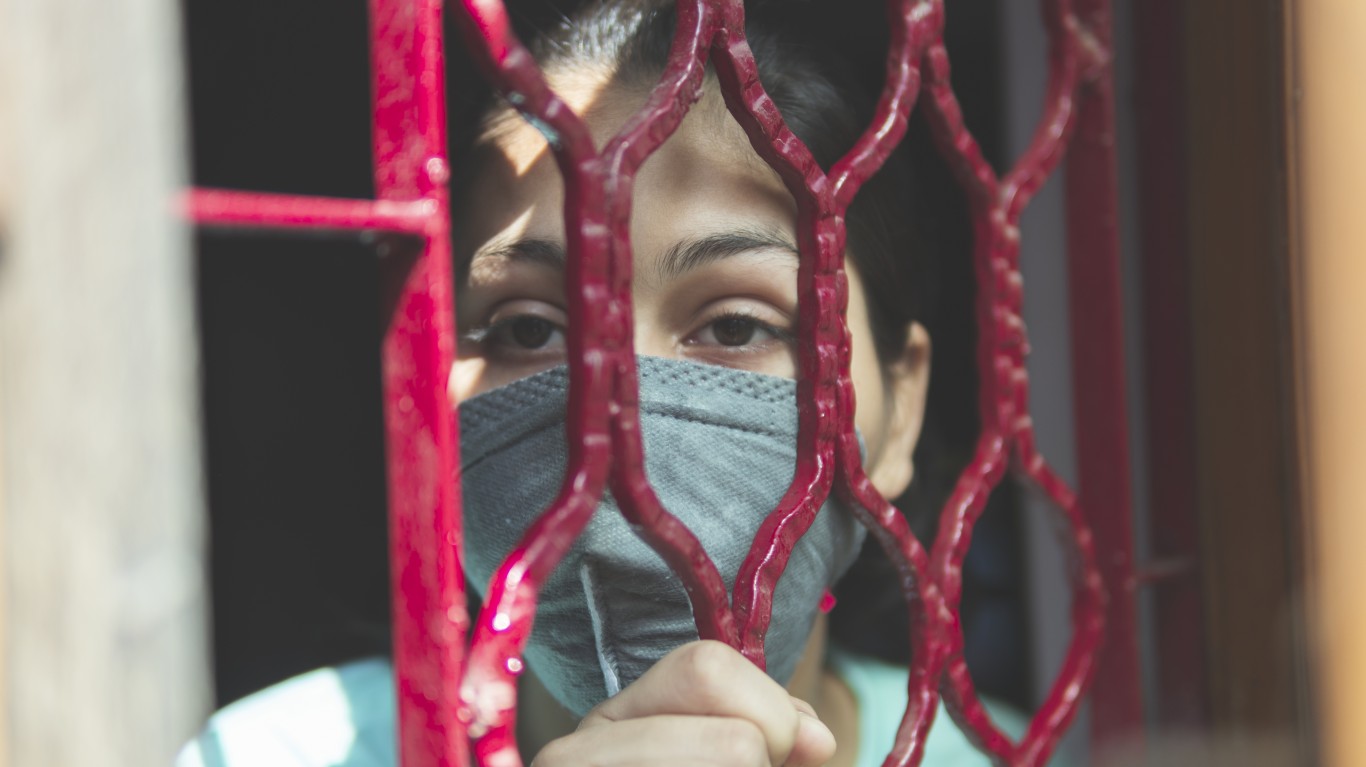Health and Healthcare
Widely Regarded Model Puts Global COVID-19 Deaths at 2.8 Million This Year

Published:

The spread of COVID-19 continues to rage around the world. India has just recorded 95,735 confirmed cases in a day, which is much higher than any single day in America. That puts India’s total at 4,465,863. India has the second-highest case count in the world after the United States, and its growth is no exception among many of the world’s nations. Other large countries, particularly Brazil, Russia and parts of Latin America, have an extraordinary total of confirmed cases that are rising. Global confirmed cases have topped 28 million. These increases have caused one of the most widely respected COVID-19 case models to forecast 2.8 million deaths by the end of the year. The current actual death total is just over 900,000. That means a sharp acceleration in deaths over the next three and a half months.
The Institute for Health Metrics and Evaluation at the University of Washington’s School of Medicine forecasts have been used by the White House and are among the most carefully followed models anywhere. The IHME periodically updates forecasts for worldwide deaths and deaths by country. Each forecast has a “current projection,” one for “mandates easing” and one for “universal use of masks.”
The current projection is based on a situation where “mandates are re-imposed for 6 weeks whenever daily deaths reach 8 per million.” Under these circumstances, deaths in the world are forecast at 2,811,777.
Under the universal use of masks set of assumptions, there is “95% mask usage in public in every location, reaching levels seen in Singapore. Mandates are re-imposed for 6 weeks if daily deaths reach 8 per million.” Singapore issued strict quarantines as COVID-19 began to spread. The death figure under these circumstances, the IHME says, is forecast to be 2,401,906 by January 1, 2021.
Finally, with the mandates easing case, there is “continued easing of social distancing mandates, and mandates are not re-imposed.” Under these circumstances, deaths by January 1 are forecast to be 4,033,869.
The IHME sees significant trouble ahead under any of these cases. Dr. Christopher Murray, the director of IHME, said as the new forecasts were announced, “The worst is yet to come. I don’t think perhaps that’s a surprise, although I think there’s a natural tendency as we’re a little bit in the Northern hemisphere summer, to think maybe the epidemic is going away.”
The United States may make a significant contribution to a high global total this year. The IHME has a current projection of 410,451 total deaths this year. That is up from today’s total of just under 200,000. The U.S. spread has been driven recently to outbreaks on college campuses around the country, as well as by the Sturgis biker rally in South Dakota, which is said to have caused over 250,000 cases. As the economy has emerged from lockdown, people have begun more dangerous gathering.
The spread in Europe also has begun to rise sharply since a drop-off that lasted three months after the deadly period of March and April. Daily case increases in Europe have recently moved ahead of those in America.
The worst spread for the balance of the year may well be in emerging nations, where health care systems are weak, and in their cities, where the populations are often crammed into small areas. Social distancing is difficult, and in some of these areas, few people have adequate masks. Several of the hardest-hit countries are relatively small by population but very poor. Peru, Columbia and Chile have higher confirmed cases than nations with much larger populations, including Bangladesh, France, Indonesia, Pakistan and the United Kingdom.
It is difficult to contemplate that 1.9 million more people could die of COVID-19 in 2020. But the case made by the IHME is not far-fetched if large parts of the world where the disease has reemerged or the confirmed case count increase already has begun to quicken are not locked down immediately.
Retirement can be daunting, but it doesn’t need to be.
Imagine having an expert in your corner to help you with your financial goals. Someone to help you determine if you’re ahead, behind, or right on track. With SmartAsset, that’s not just a dream—it’s reality. This free tool connects you with pre-screened financial advisors who work in your best interests. It’s quick, it’s easy, so take the leap today and start planning smarter!
Don’t waste another minute; get started right here and help your retirement dreams become a retirement reality.
Thank you for reading! Have some feedback for us?
Contact the 24/7 Wall St. editorial team.